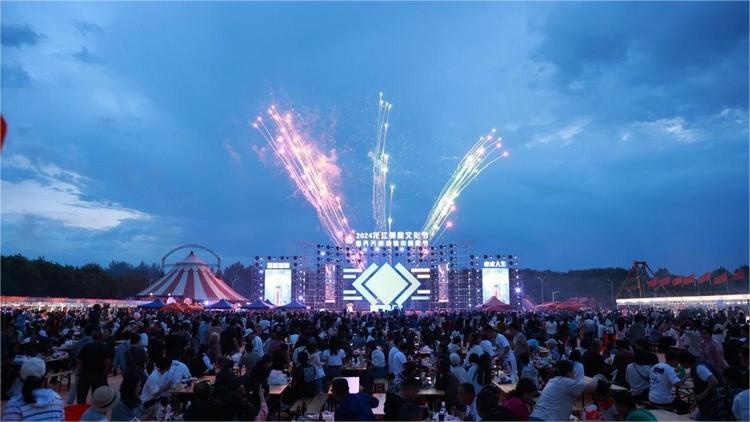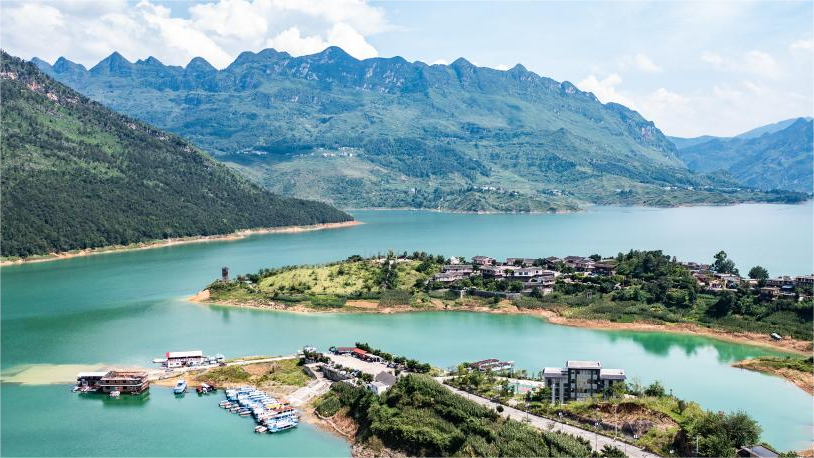In the summer season, the breathtaking scenery of Kyrgyzstan comes alive with majestic mountains and winding rivers while the expansive grasslands exude a vibrant shade of green, teeming with life.
A filming crew from People's Daily Online, as part of the "Cultural Silk Road” program, recently visited Kyrgyzstan to explore the cultural dimensions of the China-Kyrgyzstan friendly relations, which is characterized by mutual respect, inclusiveness, and mutual learning.
Archaeological collaboration continues millennia-old history of China-Kyrgyzstan civilizational exchange
As soon as Valery Kolchenko sent a photo on WeChat, Tian Youqian immediately responded, “How is our little mound doing?”
Tian is a research curator at the Shaanxi Provincial Academy of Archaeology, while Kolchenko is a senior researcher at the Institute of History, Archaeology, and Ethnography of the National Academy of Sciences of the Kyrgyz Republic.
The photo of a hillside covered with weeds and flowers, referred to affectionately as the “little mound”, was that of the ancient city of Navekat in Kyrgyzstan. Kolchenko has collaborated closely with Chinese archaeologists in the excavation of the ruins of the ancient city.
The ruins represent one of the landmarks along the UNESCO World Heritage Site, "Silk Roads: The Routes Network of Chang'an-Tianshan Corridor," a cultural heritage site jointly nominated by China, Kazakhstan, and Kyrgyzstan.
Archaeologists believe that over 1,000 years ago Navekat was a bustling new city on the ancient Silk Road.
Coins from China's Tang Dynasty (618-907) and artifacts with Sogdian inscriptions have been unearthed from the ruins of the ancient city. Kolchenko added that Zoroastrian tombs, Buddhist structures, and Christian gravestones have also been discovered at the ruins.
"We can say that this is a crossroads where different cultures and religions converge and blend," Kolchenko noted. "Where else can this be achieved except on the Silk Road?"
Since 2018, archaeologists from the Shaanxi Provincial Institute of Archaeology in northwest China's Shaanxi Province have traveled to the ruins of Navekat several times to conduct joint archaeological excavation and research with Kyrgyz archaeologists. Employing advanced surveying technologies, including real-time kinematic (RTK) positioning, the team has been able to unearth building foundations, wall remnants, and numerous artifacts while also mapping the entire ancient city site.
The collaboration has continued to deepen. In June this year, nine researchers from the Shaanxi Provincial Institute of Archaeology came to the ruins to continue excavation at a Buddhist temple site.
"Our Chinese colleagues have come a long way to work here. They respect our customs and culture while exploring both Kyrgyzstan's past and their own. It's such subtle, culture-based exchange that allows civilizations to endure and evolve," said Kolchenko.
“Epic of Manas”: A shared cultural treasure
In a traditional Kyrgyz yurt, Talantaaly Bakchiev, a folk singer known as a Manaschi who memorizes and performs the "Epic of Manas" for audiences, adorned himself in traditional Kyrgyz attire as he passionately sang a segment from the heroic saga.
"The 'Epic of Manas' promotes noble virtues. For example, it encourages people to be forgiving," said Bakchiev.
"It is important for the people of China and Kyrgyzstan to realize that the 'Epic of Manas' is one of the most sacred and strongest bonds between our two peoples," said Bakchiev, after finishing his performance.
The Kirgiz ethnic group in northwest China's Xinjiang Uygur Autonomous Region and the Kyrgyz people of Kyrgyzstan share a common ancestry.
For centuries, Manaschis of both countries have used the same language and musical tunes to tell the legendary story of the heroic figure Manas and his descendants.
In Bishkek, capital city of Kyrgyzstan, stands a towering statue of Jusup Mamay, a master of singing the "Epic of Manas." Jusup Mamay was from the Kirgiz ethnic group in Xinjiang.
In the 1970s, Chinese scholar Hu Zhenhua extended an invitation to Jusup Mamay to come to Beijing with the purpose of preserving and inheriting the "Epic of Manas." Over the following years, the "Epic of Manas," which consists of more than 200,000 lines, was published for better preservation.
At the Manas National Academy in Kyrgyzstan, Bakchiev showcased the written version of the "Epic of Manas." He expressed that Kyrgyzstan houses over 70 versions of the epic, while China also possesses several variations.
Bakchiev praised China's endeavors in preserving and promoting the "Epic of Manas," expressing a keen interest in collaborating with Chinese scholars and research institutions to jointly preserve and carry forward this invaluable cultural heritage.
"China and Kyrgyzstan are neighbors, and neighbors will always remain close. We should understand each other's cultures, as it is through mutual exchange that we truly come to know one another. The 'Epic of Manas' serves as a bridge of friendship between our two nations," Bakchiev expressed.
Trade promotes mutual understanding and friendship
Su Fengying, hailing from Urumqi, northwest China’s Xinjiang Uygur Autonomous Region, has been running a business at Dordoi Bazaar in Bishkek for nearly two decades.
Her shop sells a diverse selection of kitchenware. The stainless steel products from Jieyang city in south China's Guangdong Province and the porcelain items from Chaozhou city of the same province are particularly popular among local customers.
"Kyrgyz people place great importance on festivals, often adorning their tables with exquisite tableware and changing them to suit various occasions," Su said.
Alongside her business endeavors, Su has also introduced Chinese culture to Kyrgyzstan, enabling the locals to gain a deeper understanding of China.
China and Kyrgyzstan are deeply connected through their shared history and culture, and the flourishing economic and trade cooperation between the two countries has injected new energy into the frequent people-to-people and cultural exchanges between them.
The exchanges, mutual learning and cultural cooperation between the two countries, carried out on the basis of mutual respect and equality, are writing a new chapter of the China-Kyrgyzstan friendship.









